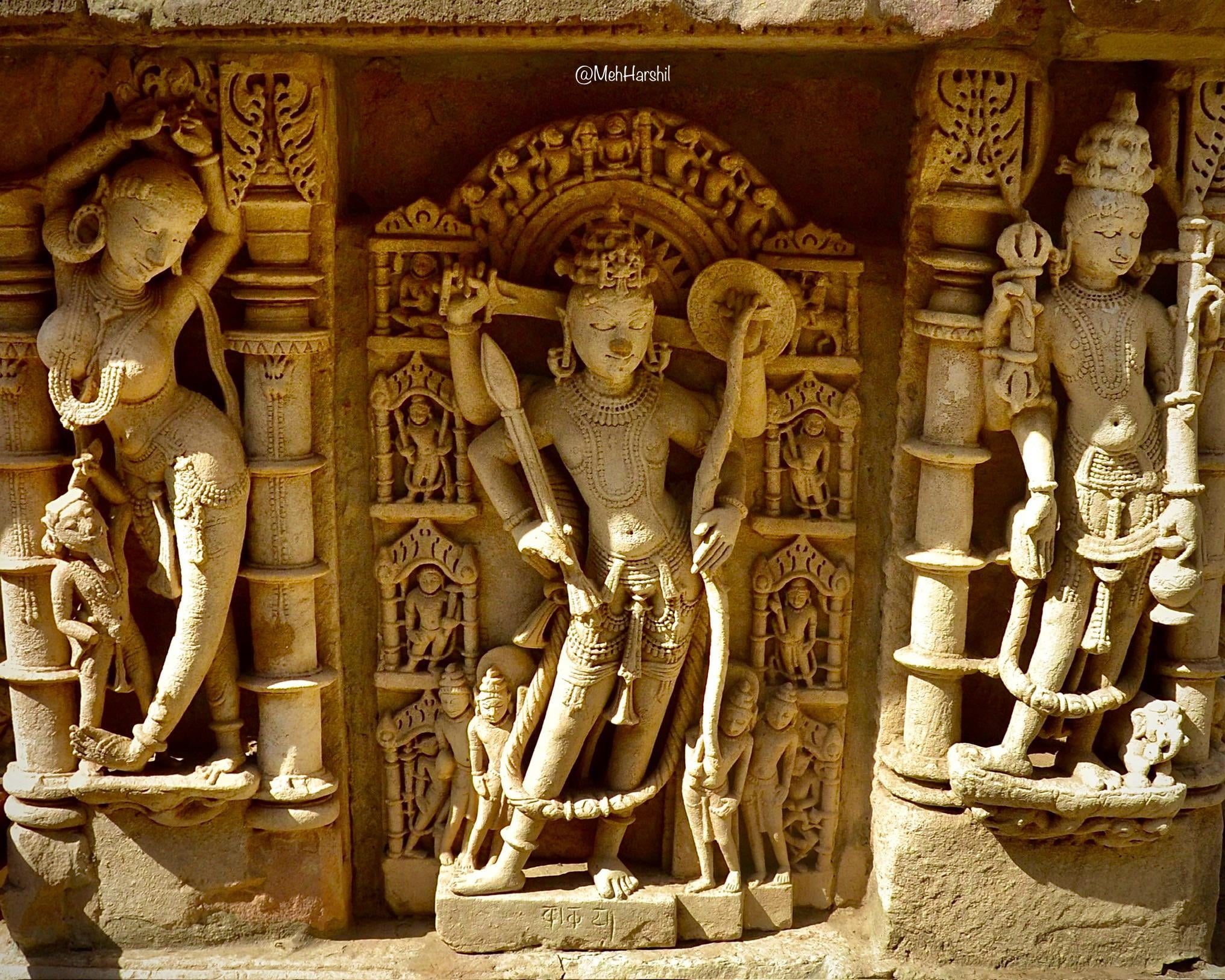[ad_1]

The “Four-handed Rama in Marugurjara Style” is a sculpture located at Rani Ki Vav, an intricately designed stepwell in Gujarat, India. This sculpture depicts the Hindu god Rama with four arms, standing in the Marugurjara style, which is a unique blend of artistry from different regions. The sculpture is part of the ornate carvings and sculptures that adorn the walls of Rani Ki Vav, a UNESCO World Heritage Site known for its architectural beauty and intricate designs.
Rani Ki Vav was built in the 11th century by Queen Udayamati in memory of her husband King Bhimdev I. The stepwell served as a gathering place for socializing, ritual bathing, and religious ceremonies. The intricate carvings on the walls of Rani Ki Vav depict various Hindu deities, mythological tales, and celestial beings.
The Four-handed Rama sculpture is a fine example of the craftsmanship and artistic skills of the artisans who worked on Rani Ki Vav. The representation of Rama with four arms is a symbolic depiction of his divine powers and strength. The Marugurjara style of the sculpture reflects a fusion of regional art styles, creating a unique and visually stunning piece of art.
Overall, the Four-handed Rama in Marugurjara Style at Rani Ki Vav is a significant cultural and historical treasure that showcases the rich artistic heritage of India and the intricate craftsmanship of its artisans.
